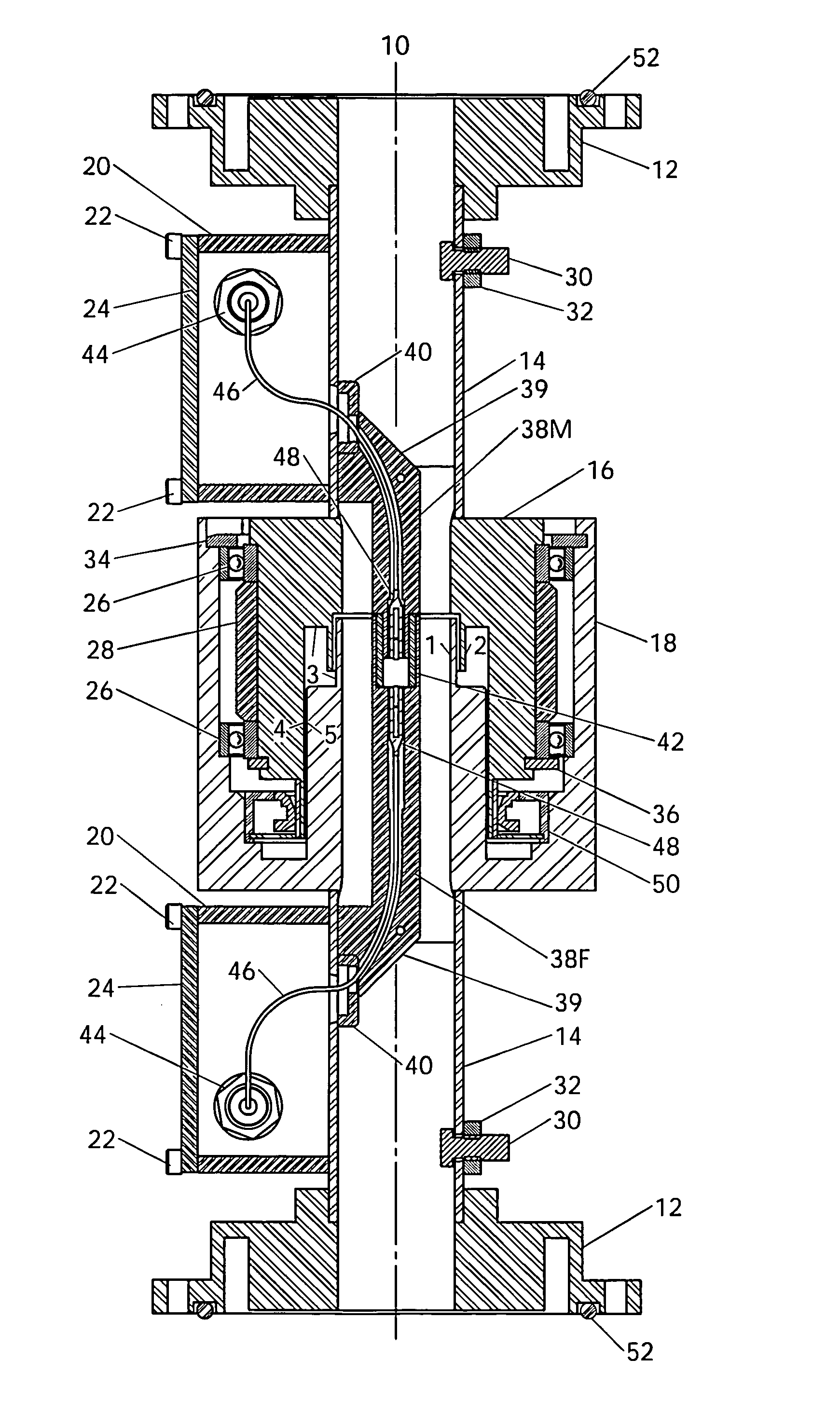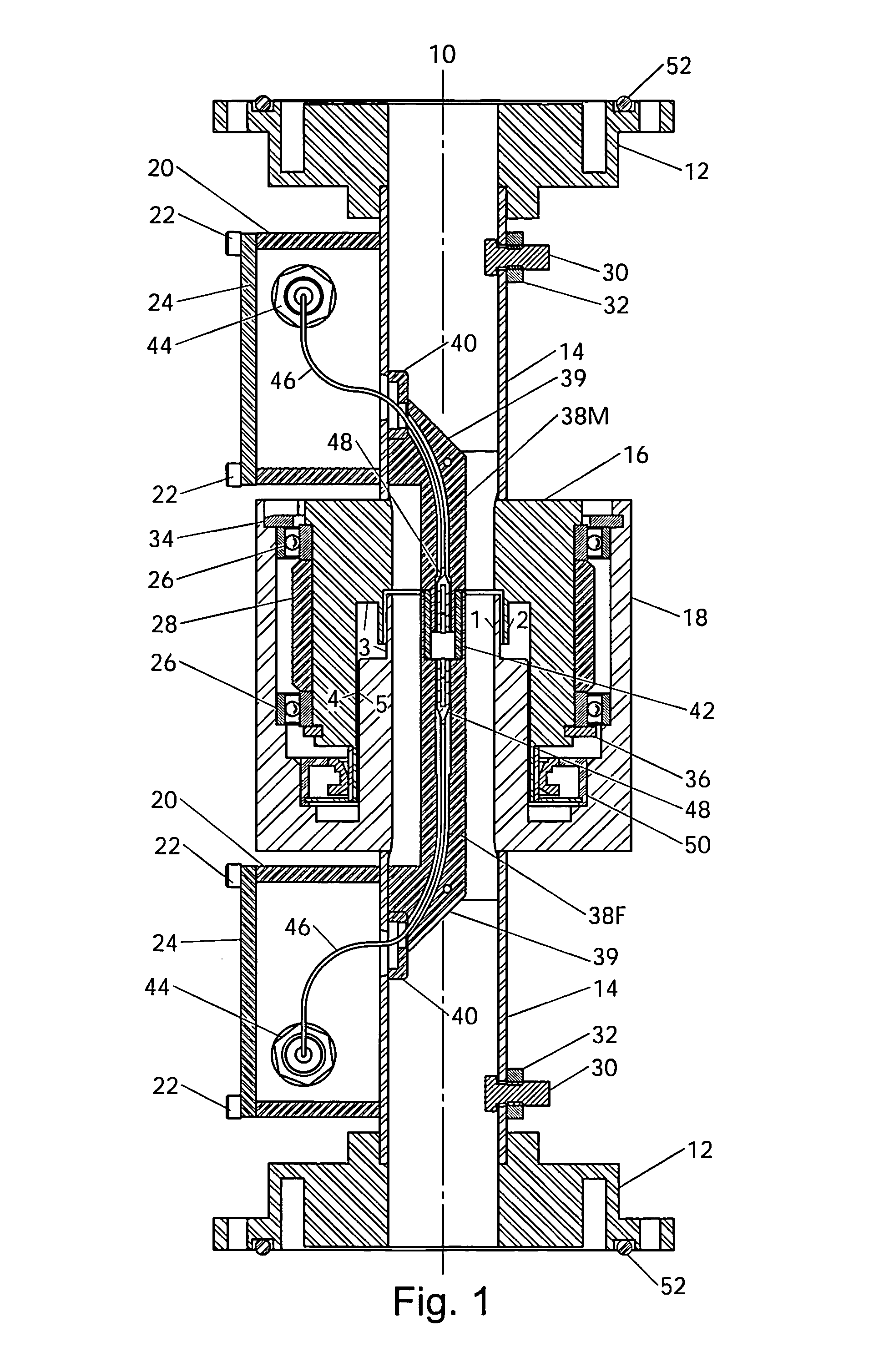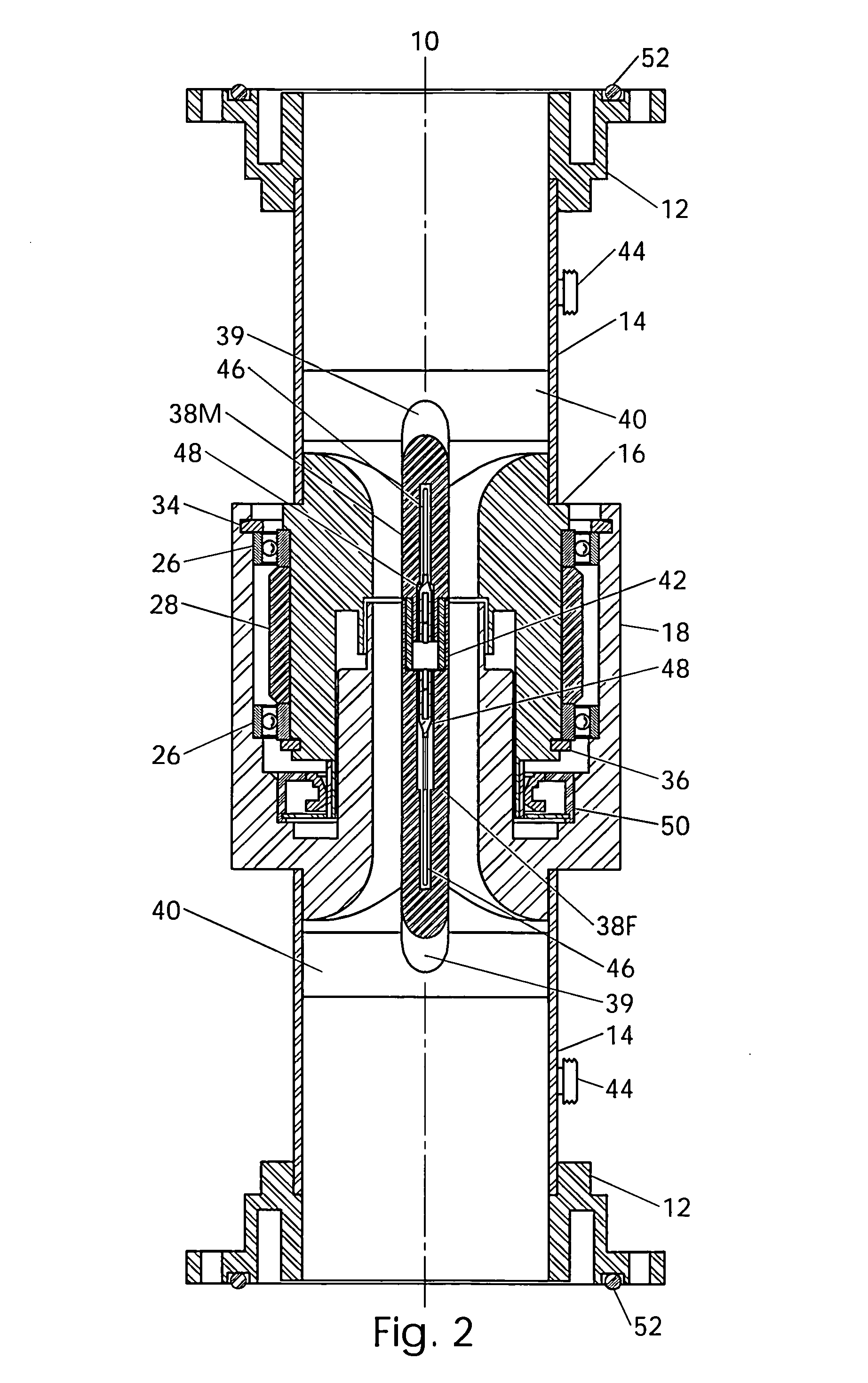Rotary joint for radio frequency electromagnetic waves and light waves
a radio frequency electromagnetic and light wave technology, applied in waveguide type devices, instruments, optical elements, etc., can solve the problems of large, heavy, complicated designs, and not particularly suitable for modern, compact systems, and the device does not employ optical anti-reflection techniques to reduce the degradation of light wave signals. , to achieve the effect of minimizing optical signal degradation, reducing mechanical structure and maximum compactness
- Summary
- Abstract
- Description
- Claims
- Application Information
AI Technical Summary
Benefits of technology
Problems solved by technology
Method used
Image
Examples
first embodiment
Radio Frequency Rotary Transmission Line—Operation
[0069]In FIG. 1, the operation of the radio frequency rotary transmission line begins with an electromagnetic wave propagating through waveguide tube 14. The waveguide-to-coaxial line transition assembly converts the electromagnetic energy from propagation through the waveguide transmission line to propagation through a coaxial transmission line that has concentric inner and outer coaxial conductors. The conversion from high-impedance waveguide to lower-impedance coaxial line is accomplished first by waveguide height-reducing plate 40 that lowers the waveguide impedance, followed by the gradual introduction of the inner coaxial conductor by inner coaxial line transition assembly 39. Inner coaxial line transition assembly 39 acts as a pick-up loop with one side attached to the waveguide outer coaxial conductor and one side attached to the inner coaxial conductor, capturing the energy from the waveguide for delivery into the coaxial tr...
second embodiment
Operation
[0098]During testing of the design example of the first embodiment, an unexpected result was discovered. Very high frequency microwaves in the millimeter wave range were found to be propagating through the hollow pathway in the inner coaxial line, which was acting as a waveguide transmission line. The millimeter waves also propagated through optical coupling device 48 (FIGS. 1 & 2) and across the optical rotary interface. This discovery proved the capability of propagating different types or modes of signals through second transmission line TX2 (FIG. 3). Both light wave and millimeter wave signals were propagating through the second transmission line bi-directionally and simultaneously, resulting in a dual-mode rotary transmission line. The transmission of the millimeter wave signal was improved with the installation of millimeter waveguide tubing over the fiber optic transmission line to create a dual-mode transmission line.
[0099]Several suitable coupling devices for dual-...
PUM
 Login to View More
Login to View More Abstract
Description
Claims
Application Information
 Login to View More
Login to View More - R&D
- Intellectual Property
- Life Sciences
- Materials
- Tech Scout
- Unparalleled Data Quality
- Higher Quality Content
- 60% Fewer Hallucinations
Browse by: Latest US Patents, China's latest patents, Technical Efficacy Thesaurus, Application Domain, Technology Topic, Popular Technical Reports.
© 2025 PatSnap. All rights reserved.Legal|Privacy policy|Modern Slavery Act Transparency Statement|Sitemap|About US| Contact US: help@patsnap.com



